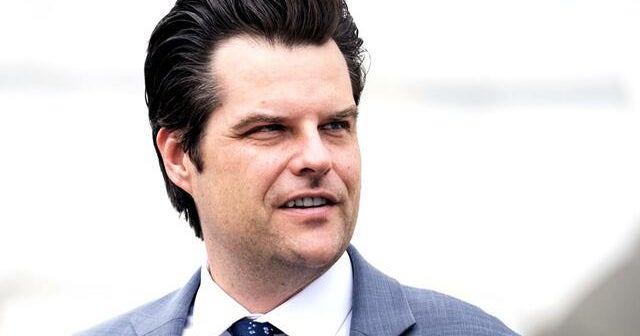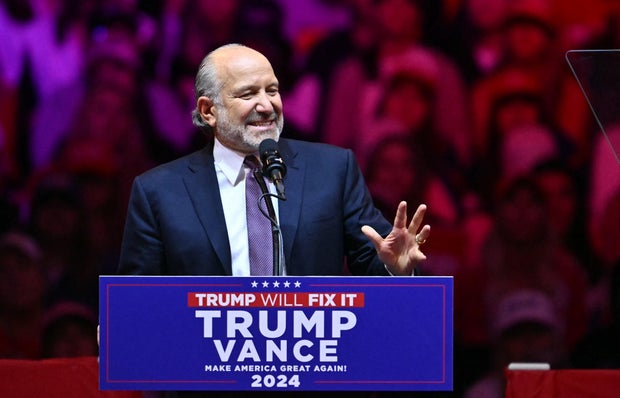CBS News
Fact-checking claims about California’s Proposition 36: What it means for drug arrests

Proposition 36 — also known as The Homelessness, Drug Addiction, and Theft Reduction Act — aims to revive drug court participation and increase penalties for certain theft and drug offenses in California.
Supporters of Proposition 36 say it will force people into treatment and get them off the street. Opponents, including Gov. Gavin Newsom, argue that it will fill up jails and mark a return to the 1980s war on drugs.
CBS News California took a closer look at the drug component of the high-profile ballot measure to fact-check those claims and analyze the concerns.
Will Proposition 36 revive drug treatment courts?
To understand this debate, you must go back ten years to November 2014 when California voters passed a different ballot measure: Proposition 47.
Proposition 47 made hard drug possession a misdemeanor instead of a felony and, along with other reforms like Assembly Bill 109 and Proposition 57, helped reduce the state’s prison population. End-of-year data from the state Department of Corrections and Rehabilitation show that from December 2014 to December 2023, California’s prison population dropped by more than 40,000.
However, court data suggests there were also unintended consequences. CBS News California analyzed county data from across the state and found a consistent drop in drug court participation after Proposition 47 was approved.
For instance, Sacramento County saw more than an 80% drop in drug court participation between 2015 and 2023. However, much of that drop came after the pandemic.
Yolo County’s drug court caseload dropped from 270 cases in 2015 to just three in 2023.
In Santa Clara County, drug court participation dropped so low that the county stopped tracking drug court cases and merged its drug court and mental health court.
While there is no reliable statewide drug court data, a 2020 survey from the Center for Court Innovation examined 67 drug courts in California. The average participation rate across those drug courts dropped from 51% to 39%.
Research cited by the California court system suggests drug courts ultimately save money and do lead to fewer arrests. The National Institute of Justice said one study found that felony re-arrest rates among people participating in drug courts dropped 28% in one U.S. county and 15% in another county.
Sacramento County District Attorney Thien Ho and San Jose Mayor Matt Mahan are among a growing number of high-profile elected Democrats going against Newsom to support the new treatment-mandated felonies for hard drug possession under Proposition 36.
Mahan and Ho say that when California slashed sentences for drug possession, it also reduced the incentive for people to choose court-supervised treatment instead of jail time.
“If you get arrested, it’s a cite-and-release for possession of drugs. It’s a misdemeanor,” Ho said. “And when the judge tells you, ‘You can get two or three days in jail or you can go to a treatment program that’s going to be a year long,’ what are you going to take?”
Under Proposition 36, the first two convictions for drug possession would still be misdemeanors. The third is a treatment-mandated felony, which means the charges would be dismissed if treatment is completed.
With a fourth conviction, a judge could issue a maximum three-year sentence, but only if someone is not eligible for treatment.
“It focuses on repeat offenders, and it allows a judge to give someone a choice between engaging in treatment or detoxing in jail,” Mahan said.
However, opponents like the governor and former San Francisco prosecutor Cristine Soto DeBerry — who wrote the opposition argument to Proposition 36 — say that there simply aren’t enough treatment beds.
“No county in the state has enough treatment to deal with the people that are struggling with addiction issues,” Soto DeBerry said. “None. Not one.”
A Rand Corporation study of five California counties — Sacramento, San Joaquin, Stanislaus, Merced and Santa Clara — earlier this year found that the availability of treatment beds varies and, in some cases, facilities with available beds don’t accept people with criminal records.
In a statement sent to CBS News California, the No on Proposition 36 campaign claimed that “22 counties have no residential treatment facilities,” echoing a statement made by Newsom in August.
We reached out to the Governor’s Office for clarification on what 22 counties he was talking about. They could not tell us, and instead, we received a link to California Department of Health Care Services (DHCS) webinar slides from January 2022, based on information collected during the pandemic, which, according to the state, referenced 22 counties not participating in a specific drug delivery program.
The DHCS said it can confirm that “all but 15 counties (Alpine, Colusa, Del Norte, Glenn, Imperial, Inyo, Lassen, Madera, Mariposa, Modoc, Mono, Plumas, Sierra, Siskiyou, Trinity)” currently have state-licensed residential treatment facilities, and in those counties, “clinics, health facilities, community and residential care facilities, jails and prisons can also offer these services.”
“I also think the voters need to hold the state and county accountable for building the treatment capacity we need,” Mahan said.
The DHCS also said that every county except Madera offers state-certified outpatient services, but representatives for Madera County say it does offer outpatient services and makes referrals to nearby inpatient services when needed.
Soto DeBerry’s criticisms of Proposition 36 include that there is no funding attached to the ballot measure or a mandate to create sufficient treatment options.
Supporters of Proposition 36 point to a variety of funding sources ranging from Proposition 1’s mental health bonds to opioid settlement funds, but critics say that still won’t be enough.
Soto DeBerry also said that it often takes multiple attempts to successfully get an offender treatment, claiming that “under Prop 36, they won’t get a second chance; they’ll be sent to prison.”
Supporters of Proposition 36 say that is false and note that the proposition specifically states:
“A person shall not be sentenced to jail or prison pursuant to this section unless a court determines that the person is not eligible or suitable for treatment…”
That brings us back to the governor’s argument that Proposition 36 is about mass incarceration.
The nonpartisan California Legislative Analyst’s Office estimates that under Proposition 36, the “prison population could increase by around a few thousand people.”
For context, there are currently around 90,000 people in state prisons. At its peak in 2006, there were over 170,000 people incarcerated, according to CDCR data.
Getting arrested saved his life
On graduation day in Sacramento County Superior Court Judge Larry Brown’s mental health court, Cesar, whose last name we are omitting, had plenty to smile about.
Cesar was arrested in Sacramento County, which has a robust system of “Collaborative Courts” — including drug court and mental health court — and related treatment programs. While in treatment, his case worker helped find him housing and work.
“I was homeless,” he said. “Nothing would stop me from getting high.”
Cesar attended all of his court-mandated treatment appointments. Completing his program resulted in his conviction being erased.
“I got a second chance in life,” he said.
Cesar’s story is a powerful example of the potential of California’s treatment courts.
“I didn’t know another life until I got arrested,” Cesar said. “And I quit cold turkey. Now, I’m sober. Now, I see how a real man feels.”
Proposition 36 supporters point to stories like Cesar’s in their argument that it will result in more people receiving treatment and getting off the streets.
“Being arrested saved my life,” Cesar said.
CBS News
Trump will nominate transition adviser and billionaire Howard Lutnick for commerce secretary

President-elect Donald Trump says he’ll nominate Howard Lutnick, head of brokerage and investment bank Cantor Fitzgerald, to be commerce secretary, a position in which he’d have a key role in carrying out Trump’s plans to raise and enforce tariffs.
Trump announced his pick Tuesday in a social media post.
Lutnick is a co-chair of Trump’s transition team, along with Linda McMahon, the former wrestling executive who was the Small Business Administration administrator in Trump’s first administration. Both are tasked with putting forward candidates for key roles in the next administration.
ANGELA WEISS/AFP via Getty Images
Lutnick has also donated millions to the effort to re-elect Trump and other Republicans. He hosted a fundraiser for Trump in August that raised $15 million and also gave $5 million to the Make America Great Again PAC, according to Federal Election Commission records.
As commerce secretary, Lutnick, if confirmed, would be in charge of a sprawling Cabinet agency that is involved in funding new computer chip factories, imposing trade restrictions, releasing economic data and monitoring the weather. It is also a position in which connections to CEOs and the wider business community are crucial.
An advocate for imposing wide-ranging tariffs, Lutnick told CNBC in September that “tariffs are an amazing tool for the president to use — we need to protect the American worker.” During his campaign, Trump proposed a 60% tariff on goods from China — and a tariff of up to 20% on everything else the U.S. imports.
“I think we’ll make a bunch of money on the tariffs,” Lutnick said, “but mostly, everybody else is going to negotiate with us, and we will be more fair.”
Mainstream economists are generally skeptical of tariffs, considering them a mostly inefficient way for governments to raise money and promote prosperity.
During the campaign, Trump campaign allies, including Lutnick, were asked about Project 2025, the multi-pronged initiative overseen by the conservative Heritage Foundation that includes a detailed blueprint for the next Republican president to usher in a sweeping overhaul of the executive branch.
Trump and his campaign worked to distance themselves from Project 2025 in the months leading up to Election Day, with the former president going so far as to call some of the proposals “abysmal.” Lutnick told CNBC he had read Project 2025 but had not met with any of its authors.
“I won’t touch them. They made themselves nuclear,” Lutnick said in September.
Lutnick, who’s worked on Wall Street for over 30 years, has been with Cantor Fitzgerald since 1983 and became its president and CEO when he was 29 years old, in 1996. On 9/11, Cantor Fitzgerald lost about two-thirds of its New York-based workforce in the terrorist attacks, 658 employees in all, including Lutnick’s brother. Lutnick survived the attack because he was late to work that day, dropping off his young son at his first day of school. In the years since the attack, Lutnick and the Cantor Fitzgerald Relief Fund have donated $180 million to 9/11 families, according to Trump’s social media post on Lutnick’s selection.
Lutnick, who is also a cryptocurrency enthusiast, was also under consideration for treasury secretary, a role that has been at the center of high-profile jockeying within the Trump world. At the same time, the treasury position is closely watched in financial circles, where a disruptive nominee could have immediate negative consequences on the stock market, which Trump watches closely.
Billionaire Elon Musk and others in Trump’s orbit were calling on Trump to dump the previous front-runner for treasury secretary, Scott Bessent, in favor of Lutnick. Musk said in his post that “Bessent is a business-as-usual choice, whereas @howardlutnick will actually enact change.”
CBS News
Manhattan DA says he’s against dismissing Trump’s “hush money” conviction

Watch CBS News
Be the first to know
Get browser notifications for breaking news, live events, and exclusive reporting.
CBS News
Nov 19: CBS News 24/7, 1pm ET

Watch CBS News
Be the first to know
Get browser notifications for breaking news, live events, and exclusive reporting.









